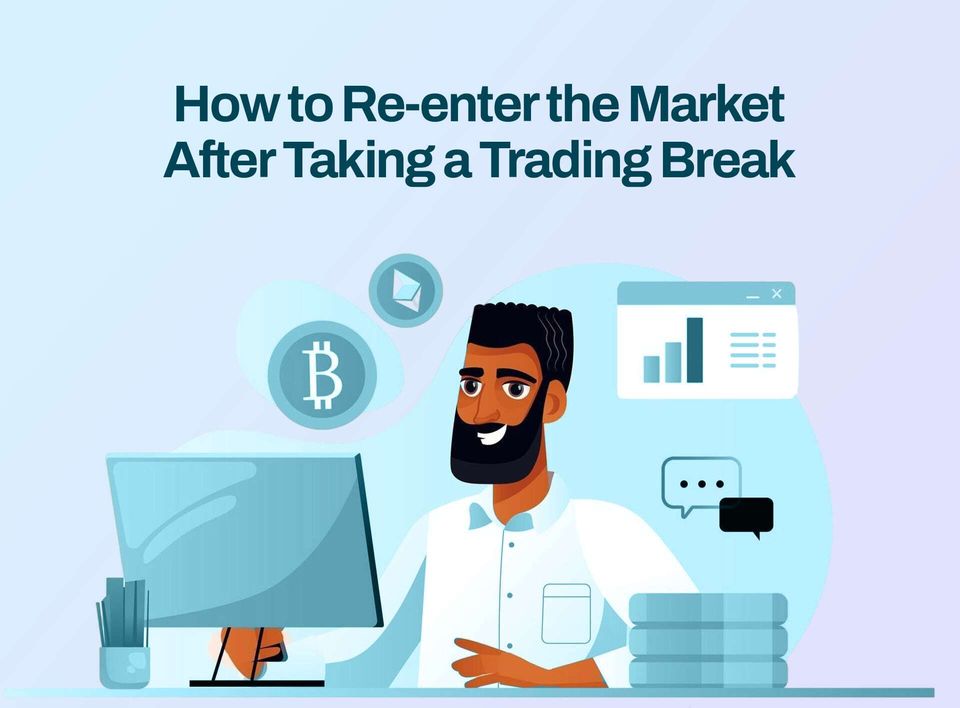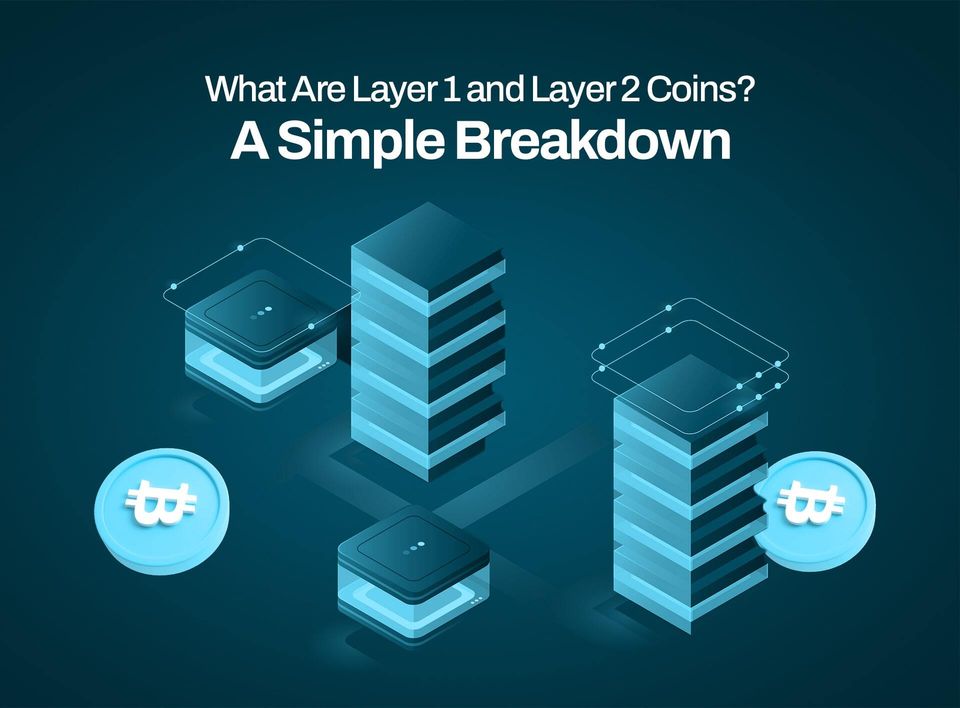Understanding Altcoin vs Stablecoin: A Simple Guide
In this article, we discuss what altcoins and stablecoins mean, their key differences, and when to hold altcoins and stablecoins.

Altcoins and stablecoins are two types of commonly used and traded cryptocurrencies.
As a trader, you may have traded both or even added them to your portfolio.
As a person curious about crypto, someone may have told you to buy an altcoin or trade a stablecoin.
In this article, we discuss
- What is an altcoin
- What is a stablecoin
- Key differences between altcoins and stablecoins
- When to hold altcoins and stablecoins
What is an altcoin?
The cryptocurrency industry is ruled by one coin - Bitcoin (BTC).
At the time of writing this article, Bitcoin has a market cap of $2.07 Trillion. For context, the global crypto market cap is $3.61Trillion.
That being said, altcoins are simply every other cryptocurrency you find on the market besides Bitcoin.
There are currently over 5000 altcoins on the market, and these are the top 10 according to their market cap:
- ETH
- XRP
- SOL
- BNB
- DOGE
- ADA
- TRX
- LINK
- AVAX
- SUI
What is Stablecoin
A Stablecoin is a type of cryptocurrency that is tied to something like regular money or gold so that it doesn't go up and down in value as much as other cryptos like BTC, ETH, DOGE, XRP, etc.
This helps keep it stable since it's pegged(tied) to the same value of a generally stable fiat currency like the U.S. Dollar or a commodity like gold.
There are over 150 stablecoins on the market, and these are the top 10 according to their market cap:
- USDT
- USDC
- USDe
- DAI
- FDUSD
- USDD
- PYUSD
- TUSD
- USD0
- FRAX
Altcoin vs. Stablecoin: Key Differences
While both altcoins and stablecoins fall under the broader cryptocurrency umbrella, they serve different purposes and have distinct characteristics:
1. Purpose and Use Case
Altcoins:
Altcoins were created to address the perceived limitations of Bitcoin and to bring new features to the crypto ecosystem.
They cover a wide range of use cases and are often designed to solve specific problems or enhance functionality within the crypto space. Examples of use cases for altcoins include:
- Privacy Coins: Altcoins like Monero (XMR) and Zcash (ZEC) prioritize user privacy and offer more anonymity than Bitcoin.
- Smart Contract Platforms: Ethereum (ETH) introduced smart contracts, enabling decentralized applications (DApps) to run on the blockchain.
- Decentralized Finance (DeFi): Coins like Uniswap (UNI) and Aave (AAVE) facilitate decentralized lending and trading without intermediaries.
- Blockchain Scaling: Coins like Polkadot (DOT) and Solana (SOL) aim to improve blockchain scalability and transaction throughput.
Altcoins expand the functionality of the cryptocurrency ecosystem beyond what Bitcoin offers. Their primary goal is to provide new and enhanced use cases, solve existing blockchain challenges, or create entirely new sectors within crypto.
Stablecoins:
Stablecoins, as the name suggests, were created with the primary goal of offering price stability.
They are typically pegged to a fiat currency (like the US Dollar) or a commodity (such as gold), which means their value doesn’t fluctuate wildly like most cryptocurrencies.
This stability makes stablecoins a store of value and a medium of exchange for both traders and consumers.
Stablecoins are mostly used for:
- Stable Store of Value: They serve as a safer alternative during periods of high market volatility.
- Transactions: Due to their stable value, they’re used for daily transactions and cross-border payments, making them ideal for users in regions with unstable local currencies.
- Trading Pairs: Stablecoins like USDT (Tether) and USDC are widely used as trading pairs on exchanges to buy and sell altcoins, reducing exposure to market volatility.
2. Price Stability and Volatility
Altcoins:
Altcoins are notoriously volatile. While this volatility can lead to high rewards during bull markets, it also comes with substantial risks. The price of altcoins is often influenced by:
- Market Sentiment: Public perception and news can cause altcoin prices to surge or plummet.
- Regulatory News: Government regulations can have a significant impact on altcoin prices.
- Technological Developments: A breakthrough in a particular altcoin’s technology can drive its price up, while failures or delays can cause the opposite.
For example, during a market rally, Ethereum (ETH) can increase in value by over 100%, but it may also experience sharp declines during a market downturn.
Altcoins generally experience much higher volatility than Bitcoin due to their smaller market caps and lower liquidity.
Stablecoins:
In contrast, stablecoins are designed to remain pegged to a stable asset, typically 1:1 to a fiat currency like the US Dollar.
This peg ensures that the value of a stablecoin remains consistent, regardless of the fluctuations in the broader crypto market. While stablecoins can face minor fluctuations (especially algorithmic stablecoins), they are far more stable than altcoins.
For instance, USDT (Tether), the most widely used stablecoin, has consistently maintained a value of around $1, even during extreme market volatility. This makes stablecoins an attractive option for traders seeking stability during uncertain market conditions.
3. Market Capitalization and Liquidity
Altcoins:
Altcoins vary significantly in terms of market capitalization. Some altcoins like Ethereum (ETH) and Binance Coin (BNB) have multi-billion-dollar market caps, giving them relatively high liquidity. However, many smaller altcoins (also known as "shitcoins") have smaller market caps and lower liquidity, making them harder to buy or sell without causing significant price fluctuations.
- Large-Cap Altcoins: These have the potential for growth and stability and usually offer higher liquidity. Examples include ETH, BNB, and XRP.
- Small-Cap Altcoins: These are often new or niche projects with smaller market caps. Their prices can swing wildly, and they are typically riskier investments.
Stablecoins:
Stablecoins, by their nature, are designed to maintain a constant value and are usually tied to large, stable assets like the US Dollar.
As a result, their market capitalisation can be enormous, but their liquidity is incredibly high due to their stable value. This makes stablecoins ideal for use in transactions, trading, and as a hedge against volatile market conditions.
For example, Tether (USDT) has a market cap in the tens of billions of dollars, making it one of the most traded cryptocurrencies on the market. USDC, another popular stablecoin, also boasts significant liquidity.
4. Security and Risk
Altcoins:
Altcoins can be more susceptible to security risks due to the varied nature of their underlying blockchain technology.
While major altcoins like Ethereum and Solana undergo rigorous security audits, smaller or newer altcoins may have vulnerabilities in their code that hackers can exploit.
Furthermore, many altcoins operate on different blockchain networks, each with its own security features and risks.
- Smart Contracts: Platforms like Ethereum can face vulnerabilities in their smart contracts, which can be exploited by hackers.
- Project Failures: Some altcoins are based on projects that may fail due to poor execution or lack of adoption, leading to a complete loss of value.
Stablecoins:
Stablecoins are generally considered less risky in terms of price volatility, but they are not entirely without risk.
The primary risk associated with stablecoins is the asset backing them. If the underlying collateral or algorithmic mechanism (in the case of decentralized stablecoins) fails, the stablecoin could lose its peg and cause a "peg break."
For instance, the collapse of TerraUSD (UST) in 2022 showcased the risks associated with algorithmic stablecoins, as it de-pegged from the US Dollar, causing significant financial losses for holders.
Centralized Risk: Some stablecoins are centrally managed, meaning the issuer (like Tether or Circle for USDT and USDC) must hold adequate reserves to back the coin’s value. If these reserves are mismanaged or the issuer fails to meet its obligations, it could lead to issues for the stablecoin.
5. Regulatory Environment
Altcoins:
Altcoins are subject to evolving regulations, which can impact their legitimacy and adoption. In some countries, governments are imposing stricter regulations on cryptocurrencies, including altcoins, which can impact their value and use cases.
- Regulatory clarity could boost altcoin prices as institutional adoption increases.
- However, sudden bans or restrictions, as seen with China’s crackdown on crypto, can result in a significant drop in altcoin prices.
Stablecoins:
Stablecoins face increasing scrutiny from regulators due to their large market size and the potential risks associated with their collateral backing.
For example, regulators in the U.S. are considering tighter regulations on stablecoins, as they pose potential risks to the broader financial system, especially if they become too widely adopted without proper oversight.
Governments may push for central bank digital currencies (CBDCs), which could compete with stablecoins in the future.
When should you hold altcoins vs stablecoins?
Whether to hold altcoins or stablecoins depends on what you aim for.
Both have their uses, and your decision should match your goals and your comfort with risk.
Here's more context to help you make a decision:
When to Hold Altcoins
- For Growth Potential
Altcoins are ideal if you're looking to grow your portfolio significantly. Many altcoins, such as Ethereum (ETH) and Solana (SOL), have delivered exponential returns during market rallies. - When You’re Comfortable With Volatility
Altcoins are volatile, and their prices can swing drastically in short periods. Coins like XRP and DOGE are notorious for dramatic price changes. - To Diversify Your Portfolio
If Bitcoin feels too expensive or you want exposure to other sectors of the blockchain ecosystem (like DeFi, Staking, or Gaming), altcoins offer an opportunity to diversify.
When to Hold Stablecoins
- To Preserve Value During Market Volatility
Stablecoins are ideal for protecting your portfolio during market downturns. Their value remains pegged to a stable asset, like USD. For example: You’re holding ETH, but the market shows signs of a bearish trend. Swapping it for USDT helps you avoid losses while waiting for the market to recover. - For Cross-Border Payments
Stablecoins are increasingly used for remittances due to their fast transaction speeds and low fees. Coins like USDT and USDC are particularly popular in Africa. - To Hedge Against Inflation
Stablecoins provide a hedge against the devaluation of local currencies. In regions with high inflation, holding stablecoins like USDT or USDC is a practical way to preserve purchasing power. For example: Your local currency is losing value rapidly. You convert your savings into USDT, which is pegged to the USD, to maintain financial stability. - For Easy Trading and Liquidity
Stablecoins are often used as a trading pair for altcoins, providing liquidity and flexibility. For example: You’re waiting for the right buying opportunity for your favorite altcoins. Holding USDT ensures you’re ready to trade instantly without converting from fiat.
How To Evaluate Which Altcoins to Invest In
Here are some essential factors to evaluate before committing your funds to an altcoin investment:
1. Project’s Whitepaper
A project’s whitepaper is one of the most crucial documents you can review. It provides in-depth details about the project’s goals, use cases, technological foundation, and the problem it seeks to solve.
- What to look for: Ensure the whitepaper is comprehensive, well-written, and realistic. Red flags include vague descriptions, lack of a clear roadmap, or overpromising claims.
Example: A quality whitepaper for Ethereum (ETH) outlines its decentralized application framework and smart contract capabilities, offering clear use cases and technical specifications. Conversely, a poorly-written whitepaper may indicate a project without much substance.
2. The Team Behind the Project
A strong development team is a key indicator of a cryptocurrency’s potential. Look for:
- Experienced Founders and Developers: The team’s background in blockchain, cryptography, or tech innovation is essential. Research their professional history on platforms like LinkedIn and their track record in delivering previous projects.
- Advisors and Partnerships: Who are the project’s advisors and strategic partners? Industry connections can boost the credibility and reach of a project.
Example: Projects like Cardano (ADA) and Polkadot (DOT) have well-known teams and advisors (such as Charles Hoskinson for Cardano) that enhance investor confidence.
3. Community Support and Engagement
The success of an altcoin often correlates with its community's enthusiasm and engagement. A large, active community can help drive adoption and ensure the long-term viability of the project.
- Social Media & Forums: Platforms like Reddit, Telegram, Discord, and Twitter are good indicators of how the community engages with the project. Check for frequent updates, user discussions, and community events.
- Development Activity: Check how active the project is on platforms like GitHub, where developers contribute code. Projects with consistent, meaningful updates show that the development team is committed to ongoing improvement.
Example: Chainlink (LINK) has a highly engaged community and regular updates on its GitHub, signaling both a strong user base and active development.
4. Tokenomics
Tokenomics refers to the economic model behind a cryptocurrency, which includes aspects like the total supply, circulating supply, and distribution plan.
- Supply: Limited token supply can increase scarcity, potentially raising the price. However, inflationary tokenomics (with a growing supply) may reduce value over time.
- Utility: How does the token function within the ecosystem? Ensure that the coin or token has a clear utility that supports its demand.
- Vesting Period: Check if the token distribution includes any vesting periods for the team or early investors. This helps avoid “pump-and-dump” scenarios where insiders sell off their tokens prematurely.
Example: Bitcoin (BTC) has a capped supply of 21 million, creating scarcity. On the other hand, projects like EOS with high inflationary models may lead to price devaluation over time.
5. Market Capitalization and Liquidity
Market capitalization gives a quick view of the project’s size in relation to the overall crypto market. However, also consider the liquidity (how easily the asset can be bought or sold) to avoid difficulties in entering or exiting trades.
- Large-Cap Coins: Generally more stable and less volatile (e.g., Ethereum (ETH), Binance Coin (BNB)).
- Small-Cap Coins: These often show higher volatility and growth potential but also come with higher risk.
- Liquidity: Ensure that the altcoin has sufficient trading volume on reputable exchanges. Low liquidity can lead to significant slippage in price when buying or selling.
Example: Ethereum (ETH) has a much higher market cap and liquidity compared to smaller altcoins like Shiba Inu (SHIB), making it less risky and more stable.
Where to Buy or Trade Altcoins and Stablecoins
Once you’ve identified promising altcoins, the next step is deciding where to buy or trade them.
Obiex supports a wide range of altcoins and stablecoins, making it an ideal platform for beginner and experienced traders.
Benefits you get when you use Obiex:
- Wide Selection: Access to popular altcoins like Ethereum (ETH), Solana (SOL), and Binance Coin (BNB), alongside stablecoins such as USDT and USDC.
- Security: Obiex offers strong security features, including two-factor authentication (2FA) and encryption.
- Ease of Use: User-friendly interface and customer support for hassle-free transactions.
Altcoins vs. Stablecoins: FAQs
Q: What are altcoins?
A: Altcoins are cryptocurrencies that are not Bitcoin (BTC). They were created to improve on Bitcoin's limitations, introduce new features, or serve different purposes in the crypto ecosystem. Examples of popular altcoins include Ethereum (ETH), Solana (SOL), and Ripple (XRP).
Q: What are stablecoins?
A: Stablecoins are cryptocurrencies designed to maintain a stable value by being pegged to an underlying asset such as a fiat currency (e.g., US Dollar) or a commodity (e.g., gold). This stability reduces price volatility, making them suitable for transactions and as a store of value. Popular stablecoins include USDT (Tether), USDC (USD Coin), and DAI.
Q3: What’s the main difference between altcoins and stablecoins?
A3: Altcoins are designed to provide additional functionality or solve problems within the crypto ecosystem, often resulting in higher volatility. Stablecoins, on the other hand, are pegged to a stable asset, making their price more predictable and less volatile.
Q: Are altcoins a good investment?
A: Altcoins can offer significant returns but come with higher risk due to their volatility. Before investing, it's essential to research each altcoin's use case, team, community, and market trends to make an informed decision.
Q: Are stablecoins a good investment?
A: Stablecoins aren't designed for high returns, but they offer a stable store of value and are useful for trading, remittances, and hedging against market volatility. They are an essential part of any crypto portfolio, especially in uncertain market conditions.
Q: How do I know which altcoin to invest in?
A: When evaluating altcoins, consider factors such as the project's whitepaper, the development team, community support, and the tokenomics (e.g., supply and distribution). It’s also helpful to check the coin's use case and the market demand for its technology.
Q: Can stablecoins lose their value?
A7 While stablecoins are designed to maintain a stable value, they can still lose value in rare situations. For example, algorithmic stablecoins can face issues if the mechanisms backing their peg fail. Well-established stablecoins like USDT and USDC are less likely to experience such issues.
Q8: What is the best platform to buy altcoins and stablecoins?
A8: Reliable platforms for buying and trading both altcoins and stablecoins include Obiex, Coinbase and Binance. When choosing a platform, consider factors like security, transaction fees, available cryptocurrencies, and customer support.
Q: Should I hold altcoins or stablecoins during market volatility?
A: During high market volatility, stablecoins are a safer choice to protect your capital. Altcoins tend to be more volatile and can lose significant value in a short time. If you're looking to preserve value or hedge against market swings, stablecoins are a better option.
Q: How can I transfer stablecoins internationally?
A: Stablecoins are ideal for international transfers because they maintain a stable value and offer faster transaction speeds than traditional methods. Platforms like Obiex allow you to send stablecoins like USDT or USDC across borders with lower fees and faster processing times.
Q: Are there risks with investing in altcoins?
A: Yes, altcoins come with higher risk due to factors like market volatility, regulatory changes, and the possibility of project failure. Always do your due diligence, research the project, and only invest what you can afford to lose.
Q: Can stablecoins be used for staking or earning interest?
A: Some stablecoins can be staked or used in DeFi (Decentralized Finance) platforms to earn interest.
Q: What is the future of altcoins?
A: The future of altcoins depends on ongoing innovation and their adoption in real-world use cases such as DeFi and blockchain applications. While some altcoins may fade, others will likely continue to thrive as blockchain technology evolves.
Q: What is the most stable stablecoin?
A: USDT (Tether) and USDC (USD Coin) are considered some of the most stable and widely used stablecoins, as they are backed by trusted assets and have solid histories of maintaining their peg to the U.S. Dollar.
Q: How can I minimize the risk of investing in altcoins?
A: To minimize risk, diversify your altcoin investments across multiple assets, focus on established projects, and stay updated on news and trends. Additionally, consider setting stop-loss orders and only investing a small portion of your portfolio in high-risk altcoins.
Disclaimer: This article was written to provide guidance and understanding. It is not an exhaustive article and should not be taken as financial advice. Obiex will not be held liable for your investment decisions.




